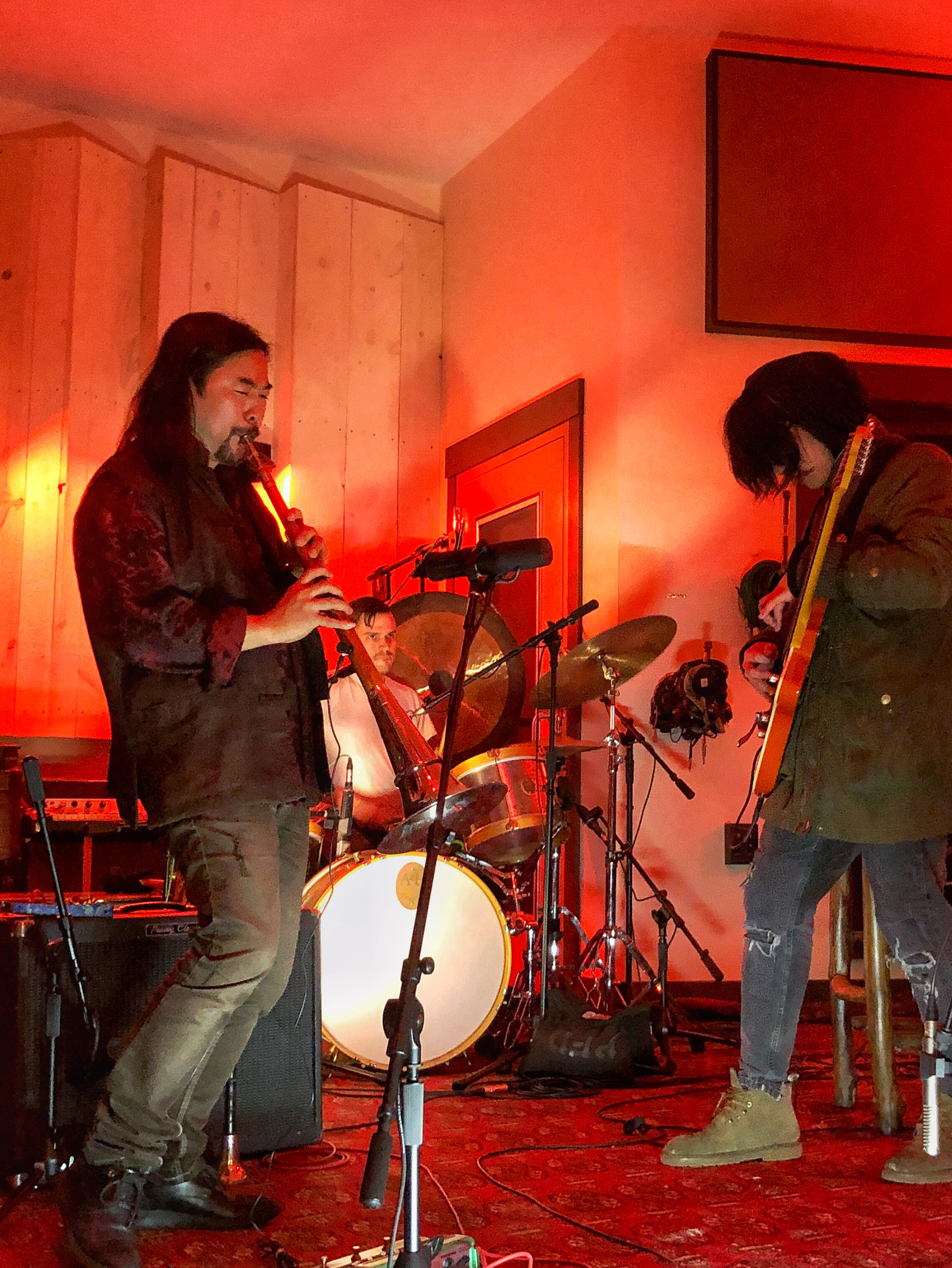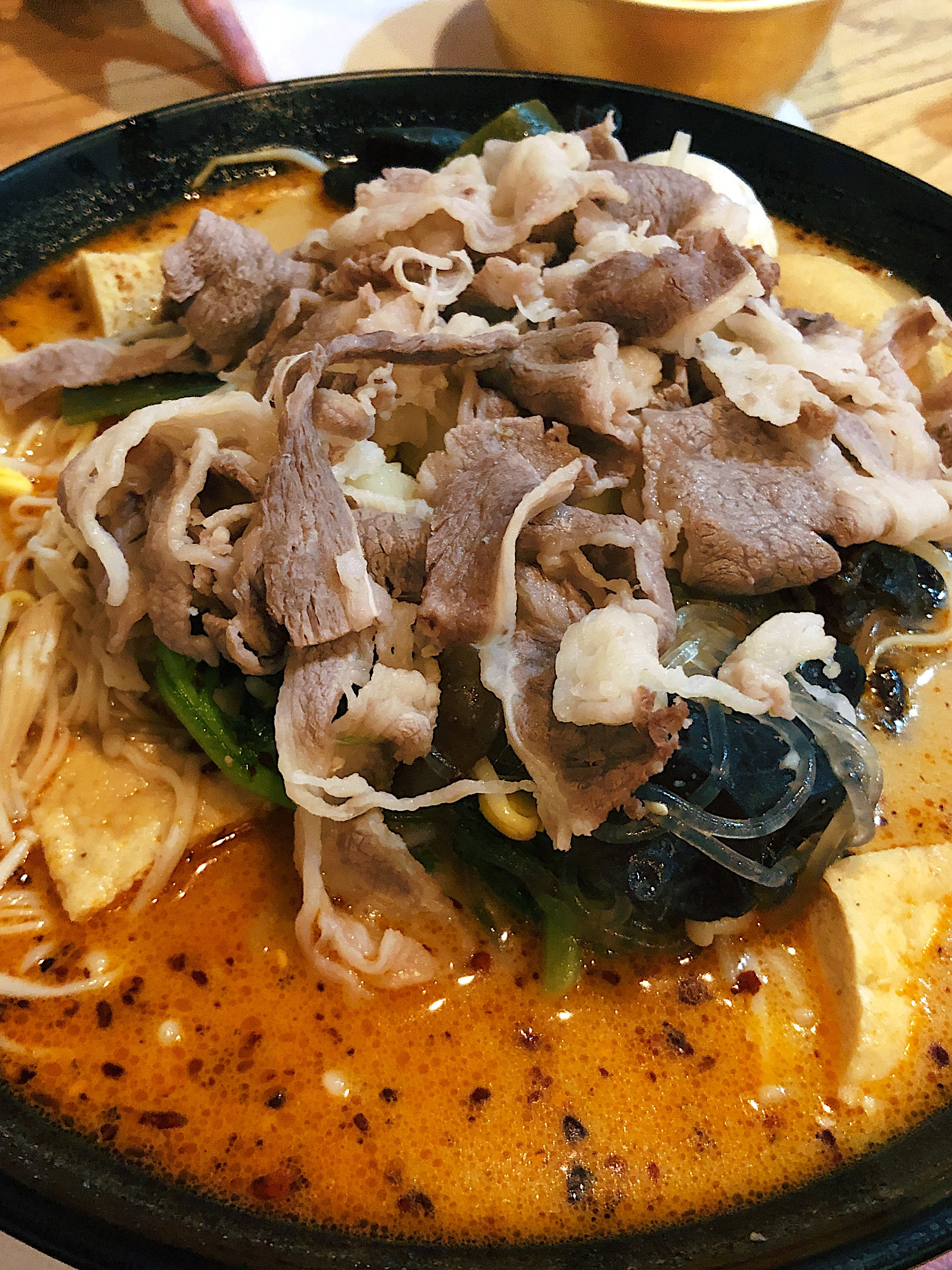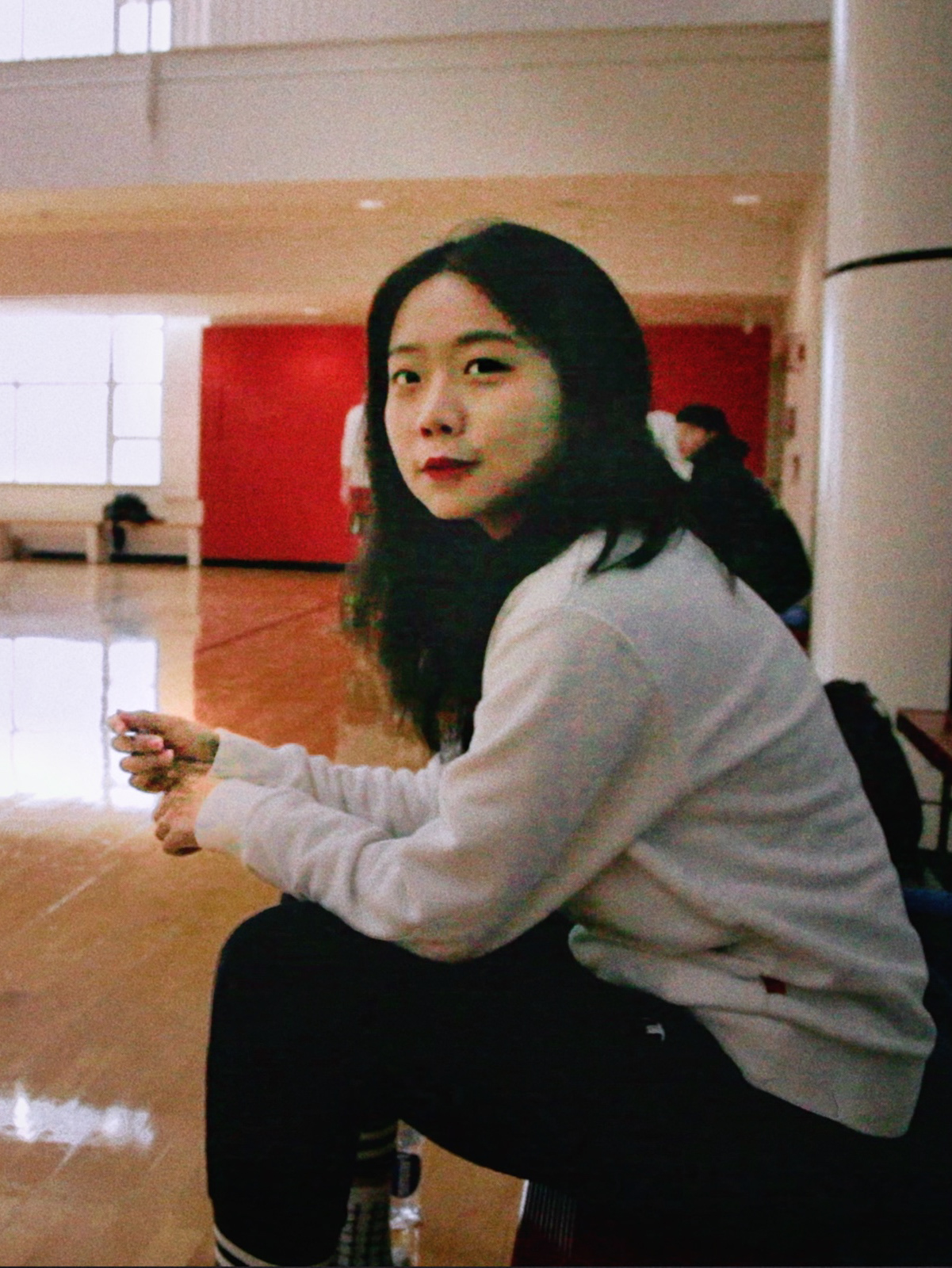March 6, 2020
In the rehearsal room inside the Greater Boston Chinese Culture Association's two-story red brick building, the audiences are expecting a traditional Chinese music show from Yazhi Guo.
The 54-year-old man standing on the podium is Guo. He wears a black peaked cap and a black cardigan with Chinese button knots. His eyes are as bright as a falcon's, but he looks somewhat more calm. His shoulder-length hair and a short beard look casual, leaving the watchers an impression of a typical artist.
Guo is holding a well-crafted hulusi, a traditional Chinese wind instrument, and playing a 1970s pop song named “The Moon Represents My Heart.” The music pouring from the plastic gourd is so sweet that I’m convinced that the hulusi’s lustrous, bright, and glassy tone is born to performing this kind of lyric song.
Only later do I realize that Guo's moment of performing the hulusi was something more than just beautiful music. Guo's wife, Tao He, says the classic song represents the yearning for the motherland in the hearts of most overseas Chinese in the United States. “Everyone in my age has heard of this song; it was a touching moment when Guo played it,” He says to me.
Guo is the world’s most prestigious performer of suona, a traditional Chinese wind instrument. Guo holds the records for highest-circulation the suona album and best-paid suona performer. In 1998, he won the Pro Musicis International Award in New York, gaining a chance to tour the world. In June of the same year, Guo performed for President Clinton during his visit to China. Hong Kong issued him the Award for Best Artist in 2012.
But Guo is more than a performer. He is keen on reinventing musical instruments to extend their sonic capacity. The purpose of this event at GBCCA is to demonstrate the multi-tune hulusi, the new version of this traditional Chinese wind instrument that Guo invented.
In 2015, Guo, inspired by the organ’s acoustic function, started experiments to test multi-tune pipes for a hulusi. He cut gourds, nested tubes, and even used McDonald's straws to experiment. Upon communication with hulusi craftsmen in Beijing and Yunnan, Guo brought up a mature idea of a multi-tune hulusi in 2018. He selected plastic rather than real gourd as the material for the resonance chamber so that it wouldn’t grow moldy, and structurally modified the acoustic tubes to achieve different tunes without changing the tubes.
In 2018, mass production of hulusi molds in Shenzhen went smoothly, and Guo shipped plastic tubes to Yunnan to add reeds. In another fortuitous incident, while wandering around the old city in his hometown, Shanxi, Guo ran into a shop that sold hand-painted craft gourds, which he thought would be a fitting addition to the upscale line of the multi-tune hulusi; hence, the sculpture painting of the red peony appears on the multi-tune hulusi we now see in the rehearsal room and every single hulusi his company produces.
Guo announces his plan to open a class at GBCCA to teach students with no musical background, after which audiences begin to bargain. “Can I sign up for half of the class process?” “If I don’t buy your multi-tone hulusi, can I learn with my own instrument?” “If I miss some classes, can I meet you personally?” Every time you expect him to refuse, he surprises you by saying “yes.”
Guo, the most rigorous master tutor at CCOM (Central Conservatory of Music, the best musical academy in China) in the 1990s, has become very enthusiastic about teaching non-professional students pop songs. Guo’s attitude toward his pursuit of career and art must have shifted during decades of discovery.
******
Back from GBCCA, Guo leads me to his studio in the basement of his well-furnished house in Brookline.
A piano, guitar, suona, erhu, guzheng, hulusi, and other Chinese instruments that I don’t know the names of, together with audio equipment and wires, entirely occupy the 500-square-foot studio. Three exquisitely lacquered gourds stand by the window; he brought them from Shanxi.
“There are more and more instruments in this studio,” Guo says, “I can tip you off to the project I’m working on - to simplify the tuning of guzheng.”
Guzheng, also known as a Chinese zither, is a plucked string instrument that has a 2,000-year history; however, since the instrument was created, if people want to tune a guzheng, they have to move the bridge of every string to a certain distance.
Guo doesn’t want me to write the details down, but I can’t help but think of how Guo’s invention would help thousands of guzheng musicians, professional or not.
My mind also flashed back to 1992, the year the Chinese leader Deng Xiaoping’s South Tour Speech that intensified China’s reforms, and the year of the Barcelona Olympic Games. Chinese pop culture arrived at a budding period and a revolutionary age that year, and the artists and performers faced challenges that had never appeared before.
At that time, Guo, the best among his peers who all graduated from CCOM in 1990, was a teacher at his alma mater. Besides teaching, he often helped record the suona part in pop songs. He was troubled by the unfamiliar keys the pop music required: F-sharp and A-flat never appeared in his traditional suona score. He had to adjust the mouthpiece himself to satisfy the key, which was tiring and unstable.
When Bingchen Liu, another suona musician from Shandong, added a valve on a suona to accomplish a semitone, Guo thought there might be a better solution. Benefiting from his early experience of playing French horns, he invented a flexible core with a spring to replace the original copper core, without changing the structure of the traditional suona. With the support from the craftsmen from Beijing Xinghai Music Instrument Factory and CCOM’s Department of Scientific Research, Guo finally brought to life the flexible core for suona, and for that, he won the nationwide technology award in 1993.
"There weren't many people working on instrument reinvention back then,” Guo says to me. He was young, thoughtful, and passionate. And he has always been among the avant-garde artists who define art with their own creativity.
After the handover of Hong Kong to China in 1997, the thriving metropolis attracted a bunch of elites from all fields. In 1999, the Hong Kong Chinese Orchestra (HKCO) was recruiting a chief suona player. It was the most professional orchestra worldwide and offered the highest salaries to the orchestra members, but what interested Guo was something more. He had taught at the school for nine years. But after all, he’s a performer; his desire to be on stage had never been stronger. So he took this chance and seized a position in the orchestra without hesitation.
Life in Hong Kong was totally different than teaching. The orchestra had to rehearse for a totally new performance every two weeks, which took a lot of time. Guo insists that HKCO has the heaviest workload among orchestras, but also the most innovative one.
Guo built his career on such proficiency in performing. In 2007, Guo got a permanent residence permit in Hong Kong. In the same year, HKCO held a large-scale sold-out concert for him named, “Guo Yazhi’s Wind Music World - Legend of Suona” at Hong Kong Cultural Center Concert Hall, which raised his reputation of “best suona performer” in the media.
People remembered when Guo stood in the middle of the stage, with various Chinese instruments on the table around him. He proved himself as a master in not only suona but Chinese music in general. Among all the instruments, there was a pot of philodendron cordatum (a kind of houseplant with heart-shaped leaves). Everyone thought it was a decoration until Guo picked up the leaves and blew his mouth against them like a musical instrument; melody came out.
It was not the first time Guo blew leaves. Tao He, Guo’s wife, a classmate at CCOM and colleague at HKCO, remembered that one winter nearly 20 years ago, they went to Yunnan with HKCO for a performance. Guo, as usual, wandered here and there to collect folk songs.
In the afternoon, Guo and He went into a local theater where a song and dance troupe was performing. On the stage, a male performer was blowing toward a leaf. “Look! How interesting!” Guo became excited, “How could he make melody by a leaf?” She knew Guo wouldn’t let it go.
On their way back to the hotel in Yunnan, Guo picked up a rounded leaf from the ground, pressed it to his lips, and blew gently. Nothing happened. Guo kept picking up leaves the whole way.
Back in Hong Kong, Guo carried a leaf on the bus, and practiced so intensely that He asked him sheepishly to stop. When they celebrated Lunar New Year in He’s hometown in Shenzhen, Guo still brought home leaves from time to time. “He could find leaves anywhere. Even my father asked, why he’s so obsessed with leaves now?” Tao He remembered, “When he was entranced with something, he throws himself into it. He’s really different than anyone else,”
******
Guo has made a difference in the history of the suona. In the past, people in the countryside had the suona played at weddings and funerals. With changes in funeral and marriage habits, the suona isn’t often used in daily life, so hardly any modern music is written for it.
But Guo changed that fact by commissioning composers to compose concertos for the suona, including “Calling for the Phoenix” by Wenchen Qin, "Trace IV” by Deqing Wen, and “The Great Desert and the Yellow River III” by Haofu Zhang. They all created a brand new chapter in the history of modern Chinese folk music; they are the study objects of countless Suona students, giving the world a pair of fresh eyes to understand folk music and Chinese culture.
Besides, Guo tried out something even more creative and bold. He had always hoped to develop improvisational performance within Chinese music. So in 2013, when Berklee College of Music invited Guo to its prestigious, invitation-only Artist Diploma program for successful professional musicians, he accepted. With the flexible core to expand the suona’s function, Guo was able to play jazz and rock on the suona with western musicians in the U.S. “Jazz has a similar cultural gene with Chinese music,” Guo said, “that is improvisational.”
At the end of February, Guo did an improvisational performance titled Sonic Cure for UCCA Center of Contemporary Art with nine other artists. The performance was a live stream show on a video sharing app, Kuaishou. Guo performed with a rock singer and composer from China who plays guitar and another musician and producer from Boston who plays drums. Their performance attracted 500,000 people who watched simultaneously.
The guitarist, Yucao Liu, is a fan of the suona and Guo’s school mate at Berklee.
In the summer of 2013, Liu invited Guo to record the suona in his songs at Q Division studios in Somerville. The first song was called “Kim’s Doggy Execution,” whose 60-second intro consists of a resounding suona solo, strumming guitars and powerful drums. The sound out of the little copper horn was fresh. And when the producer applied the guitar's distortion effect to the suona soundbite, everyone in the room was shocked.
It was the first time that Benny Grotto, the producer for Liu, realized he was listening to the suona, and he was shocked by the power of Guo’s performance. “This man was awesome. He got a very gentle personality, but he made ferocious music,” Grotto thought.
“At first I was curious about what the suona could do,” Liu said, “but that day I affirmed my mind to make rock music with the suona.” Liu used the suona in five of the 10 songs on his debut album, The Rite of Spring, which was highly rated by music critics.
The success of Liu's debut album became a proof of the suona's revival. “I really admire what Guo did for Chinese music,” Liu said, “There are seldom artists that accomplished great achievements as he did, and he never gives up trying something new.”
He, Guo’s wife, admires Guo’s exuberant curiosity. “A sincere musician who develops music is like a child playing a game that keeps updating itself. He enjoys the process to discover the possibility of music, and he’s good at it.”







